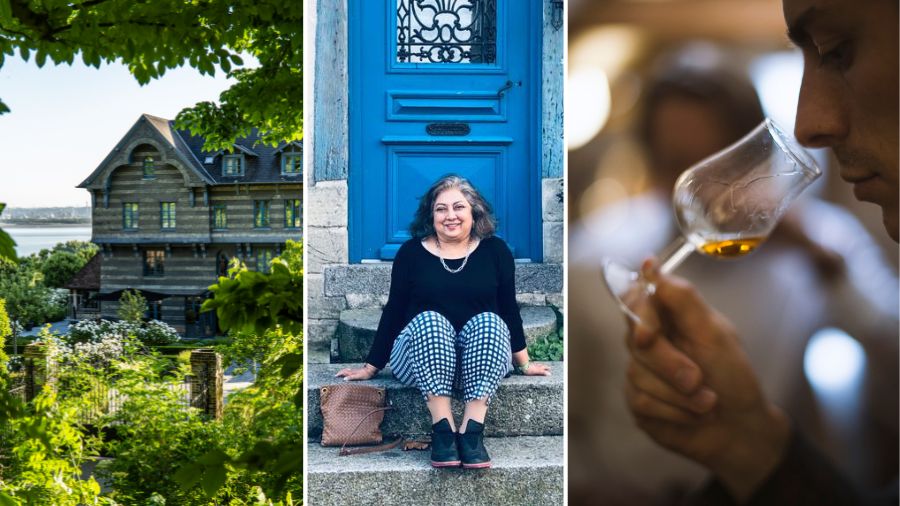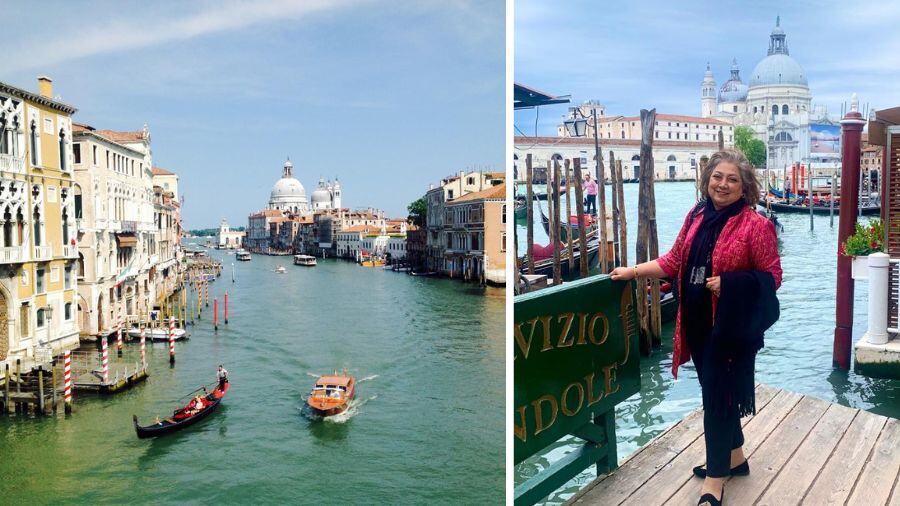I am in France, a country I called home many years ago. For some strange reason, I never visited Normandy when I lived in France, but I was there recently to discover and enjoy what this region in northwest France has to offer. To my surprise there was plenty to do, eat and drink. It is also the land of history — William the Conqueror, small chateaux, 17th-century houses with original wooden beams, and people who are fiercely proud of their heritage.
Here are 10 things I recommend you explore when in Normandy
An apple tipple in the Pays d’Auge
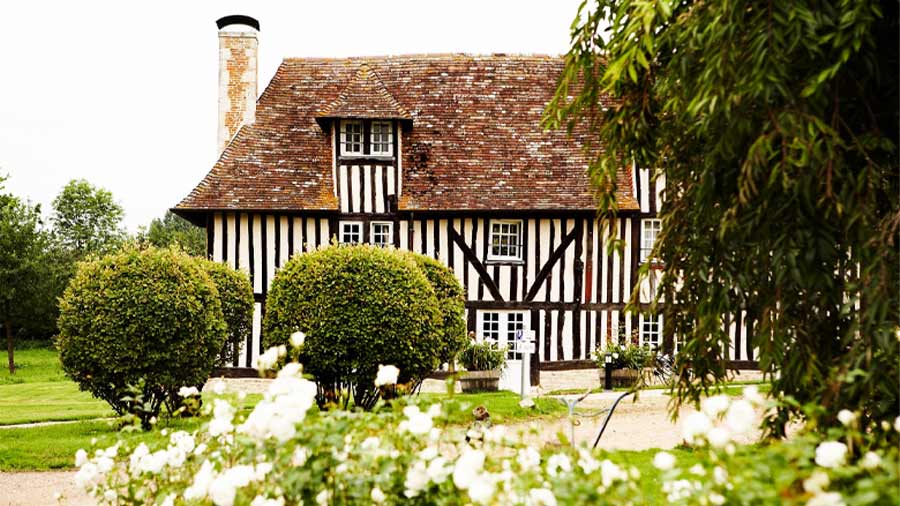
The Calvados Christian Drouin estate
You absolutely must visit Calvados in the Pays d’Auge to learn about and taste their apple brandy, also called Calvados — a favourite tipple of mine for many years. There are about 10 family-owned distilleries left that make both cider and the spirit Calvados. We chose to visit and stay at Calvados Christian Drouin. It’s a stunning setting with apple orchards where 35 different varieties of the fruit grow, a vintage distillery, a 17th-century manor house, cellars and a tasting room. They own other orchards in the region but this setup is by far the prettiest. They have top-notch products that range from young and fruity to aged.
If you’re lucky, Guillaume, the charming, young, third-generation Drouin, may just pop in to open something special for you. I was enlightened by the amount of work that goes into the process, which I also learned is totally organic (no pesticides are used on the apples). Cows graze the orchards, contributing to production by fertilising the soil and eating the wormy apples in September. Apples are harvested on the ground when fully ripe, between September and November, and then taken to the press. It takes time — 10 years for the apple trees to grow and bear fruit, three months to make cider and then several more months to make young Calvados. The speciality of this company is aged Calvados.
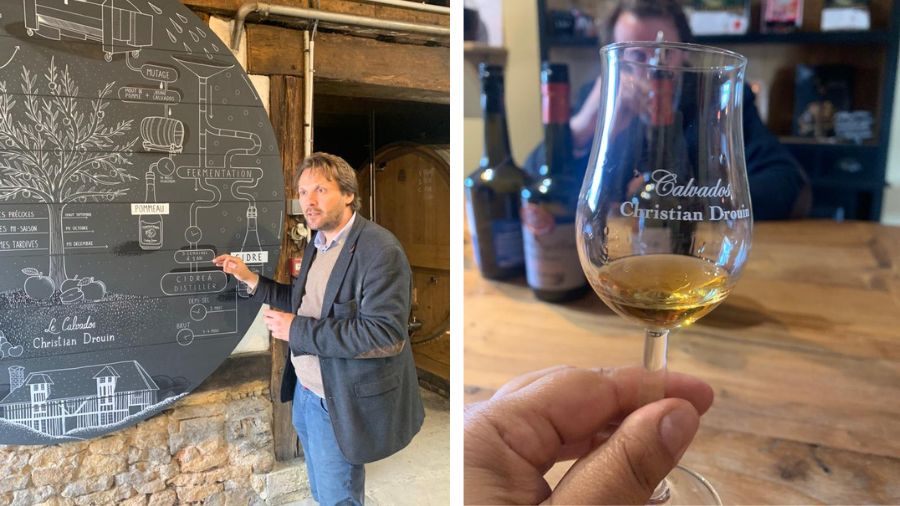
Guillaume, a third-generation Drouin, explaining the process, and (right) a Calvados tasting
We were lucky enough to try the 1962 Millésimés, which was frankly in another stratosphere. I was also fortunate to meet Christian Drouin, Guillaume’s father. Today he travels the world meeting importers and giving classes on Calvados. Over dinner in a local bistro, he explained to me how his father, Christian Drouin Sr, happened to start making Calvados as a passion. Christian Drouin Sr was both rigorous and enterprising. He spent the first 20 years distilling cider. The resulting Calvados was set aside to age in former sherry, port or Calvados oak casks stored in the old, half-timbered out buildings of the farm. He also acquired several batches of very old Calvados when the estates of some reputed producers were sold. Christian Drouin Sr won his first medals in regional competitions and in Paris. In 1969, Christian Drouin Jr went into partnership with his father, but it was only in 1979 that stocks were considered sufficient to allow marketing to begin. Today the blends are still created jointly by Guillaume and his father, who also share responsibility for exporting to a staggering 65 countries.
Cider and cheese at Pont-l’Évêque

The cheeses at La Degusterie and (right) a cheese and cider tasting with owner David Raguet
A must visit to La Degusterie in the commune of Pont-l’Évêque. The cuisine of the region revolves around a superior quality of butter made from unpasteurised milk. The cows munch gently on green grass and a bit of hay, all year round. The result is creamy milk which also results in excellent cheese. This is the home of the pungent Camembert, Livarot with a heady aroma but mild flavour, the heart shaped Neufchâtel and my new favourite, the very elegant Pont L’Eveque. I also learnt something which I have suspected for some time — you don’t have to drink red wine with cheese. Opt for a tasting of ciders from the area paired with these cheeses by David Raguet, the handsome owner.
Breakfast at a ‘boulangerie’
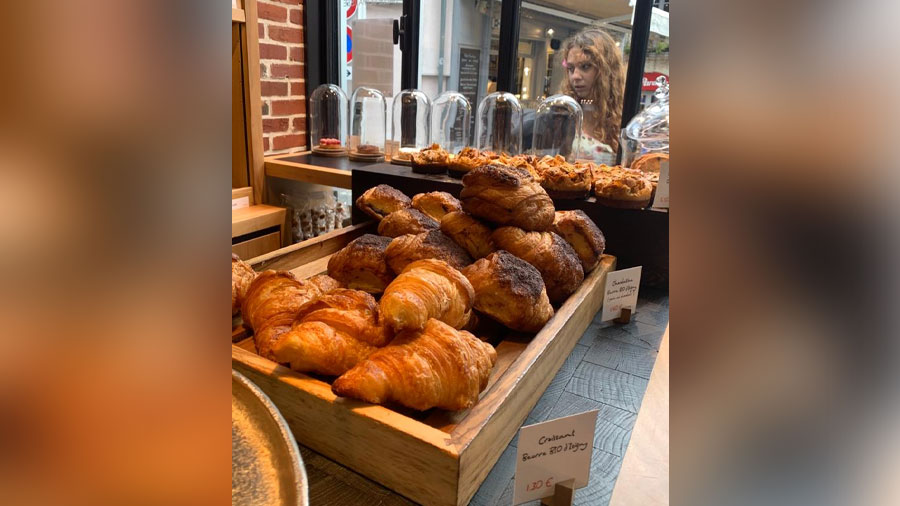
Croissants and other ‘viennoiserie’ at a ‘boulangerie’ in Normandy
I saw queues outside every boulangerie (bakery) in the mornings. I really couldn’t understand what the fuss was all about. Did the French really need to buy fresh croissants and tarts every morning? Well, it seems so. I changed my mind about it being a fuss when I tasted their viennoiserie or breakfast pastries — croissants, pain au chocolat and the inimitable chausson aux pommes, which is a light apple turnover with flaky pastry on the outside and fresh apple puree on the inside. When I asked a local chef why their patisserie was just soooo good. “It’s the butter!” came the reply.
Coast through the coastline

Oscar-Claude Monet’s ‘The Manneporte near Étretat’ and (right) Jean-Baptiste Camille Corot’s ‘The Fisherman's Cottage’ both portray scenes from Normandy’s coast Wikimedia Commons
This is the land of the French impressionists Boudin, Corot and Monet who took refuge in the slightly more severe climate of Normandy — as opposed to sunny Provence — with its temperamental weather, lyrical coastline and iridescent skies. It’s also a coastline where they serve great big platters of seafood, in eateries along picturesque cobblestone streets with views of boats on the water.
Visit the works of Eugène Louis Boudin
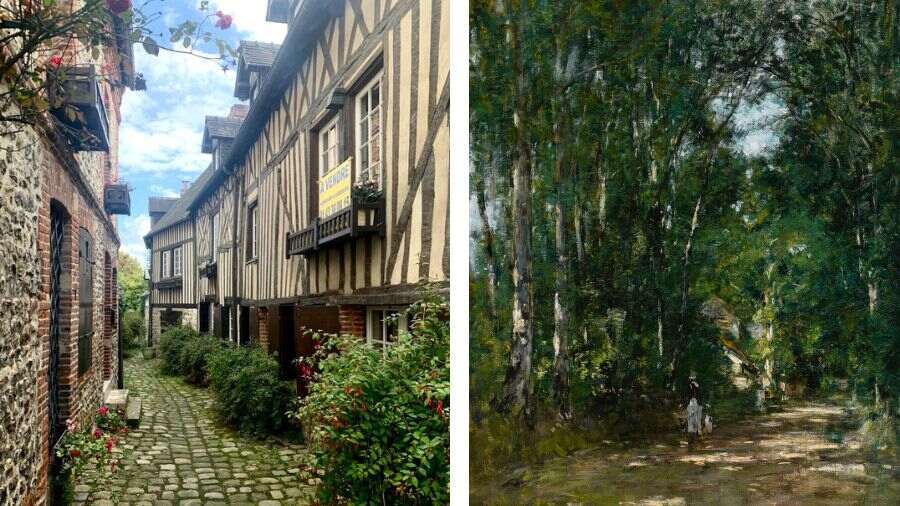
The streets of Honfleur and (right) ‘The environs of Trouville’ by Boudin Wikimedia Commons (right)
The Eugène Boudin Museum in Honfleur is a must visit. It is perched on one of those cobblestone streets in the port town of Honfleur, and has a sizable collection of the French impressionist known for his landscape paintings. The museum also houses works of other early impressionists.
Stay like an impressionist at La Ferme Saint Simeon

The pavilion at La Ferme Saint Simeon
Discover the utterly charming La Ferme Saint Simeon, a must-stay in Honfleur. The heritage stay, now a Relais & Châteaux property, was originally a 17th-century inn, where many impressionist painters lived in the 19th century when it served as the cradle of the impressionist movement in Honfleur. Honfleur itself is a beautiful little village that seems right out of a painting, with a small harbour encrusted with seafood restaurants (try the famous seafood platter at Le Vieux Honfleur, the oldest restaurant in town).
The story goes that a certain Mère Toutain welcomed her guests, many of whom were painters, to her manor house where the hotel now stands in the early 19th century. They were charged 40 francs (about Rs 3,500 today) per month for full board! The location was stunning — artists loved the light and magnificent views over the Seine estuary. Boudin, Pissarro, Monet, Jongkind and Sisley all stayed here and voila, the Honfleur School of Impressionism was born.
The Boelen family bought the property in the 1980s and have restored the old manor house, keeping traditional elements like the thatched roof and exposed oak beams along with preserving room 22 which was Claude Monet’s favourite. Jean-Baptiste Corot preferred room 19. They’ve added two stunning restaurants, a spa and redecorated all the rooms in taupe and white linen, preserving the original look and feel which results in a very upmarket product.
Eat at La Boucane
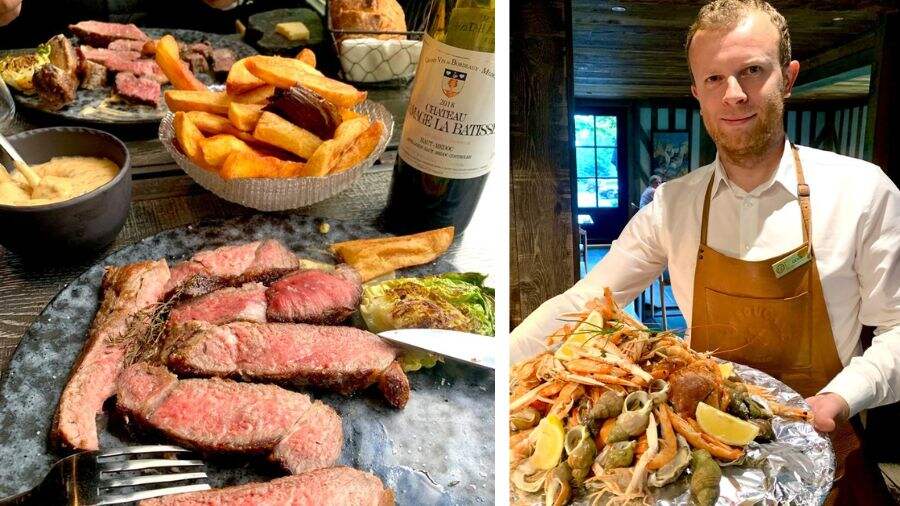
Situated in a thatched roof cottage, this is the bistro at the Ferme Saint Simeon. Away from the crowds and hustle-bustle of Honfleur port, you can enjoy a fantastic platter of seafood, local beef, pork and lamb, local unpasteurised ‘Bordier’ butter and the most magnificent apple tart with, yes, crème fraiche.
Check out the Bayeux Tapestry and Chateau d’Audrieu
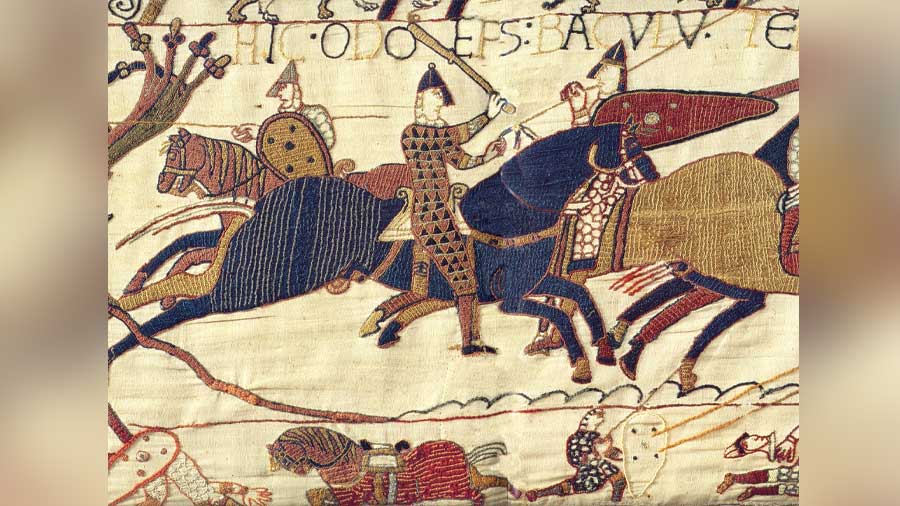
A scene from the Bayeux Tapestry depicting Bishop Odo rallying Duke William's army during the Battle of Hastings in 1066 Wikimedia Commons
If you want to venture a bit inland, towards Caen and Bayeux where the Norman tapestries are, then another Relais & Châteaux property, the Chateau d’Audrieu, should be on your list of places to visit. In Bayeux, check out the famous Bayeux Tapestry. The almost 70-metre-long embroidered artwork depicts events from the Norman invasion of England in 1066 and is on display in an 18th-century seminary. Bayeux also has a stunning cathedral.
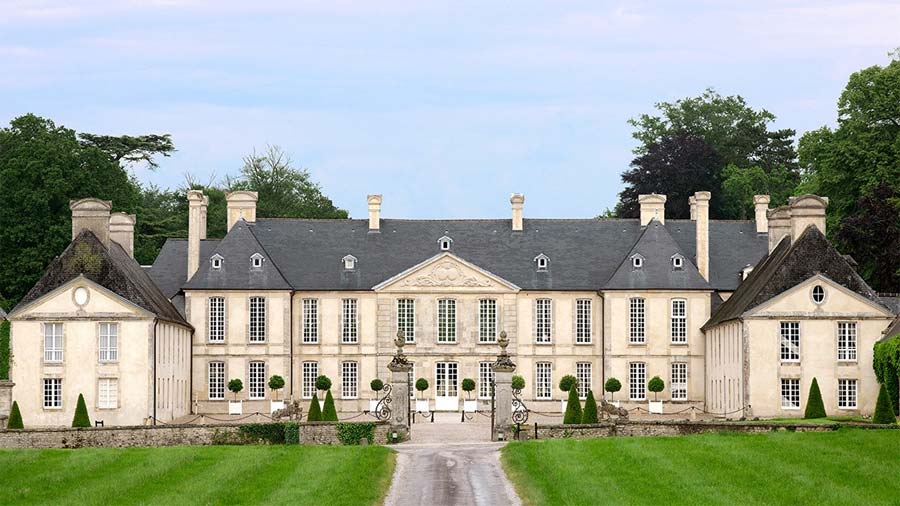
Chateau d’Audrieu
An impressive vision greets you as soon as you drive into the Chateau d’Audrieu, which stands on land belonging to William the Conqueror. The chateau was constructed in 1715 and is a listed historical monument. While the exterior is unchanged, the interiors have been restored in their original style with chandeliers, rich upholstery and plush carpets. It is situated on a 50-acre park with 12 acres of gardens. It has two restaurants, a fine-dine and a more casual restaurant (however there is nothing casual here at all), a bar, a pool and a small spa. The Chateau d’Audrieu is perfect for a luxury weekend getaway.
Spend a day at Deauville and Trouville
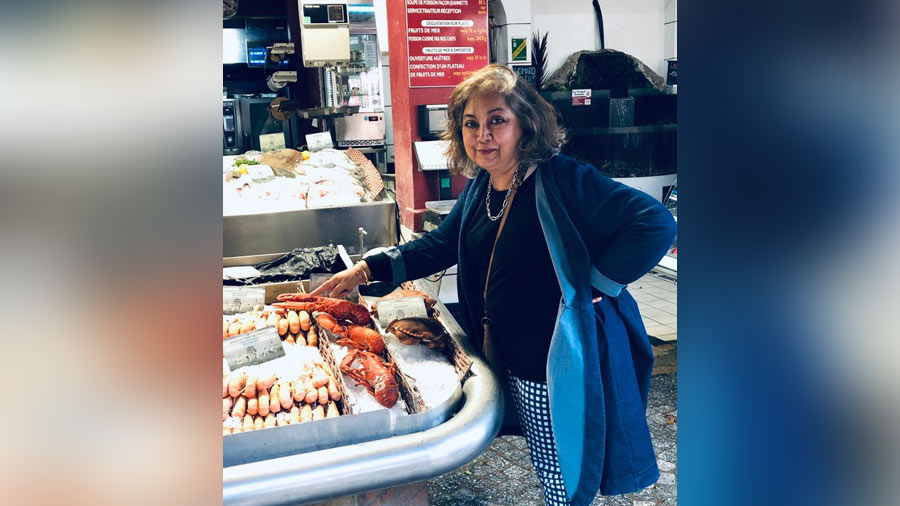
At the seafood market in Trouville
If you’re as old a Francophile as me, you would remember the film A Man and a Woman. Most of the romantic scenes of the 1966 French movie were shot in the seaside town of Deauville in Normandy. Right beside Deauville is the other seaside town of Trouville, which has a seafood market where you can choose your seafood from the stalls and have it cooked right there. Both towns have a picturesque port with pleasure boats and private yachts and plenty of little restaurants. Trouville especially has some very French brasseries, like Le Central that overlooks the port.
Explore Normandy’s villages
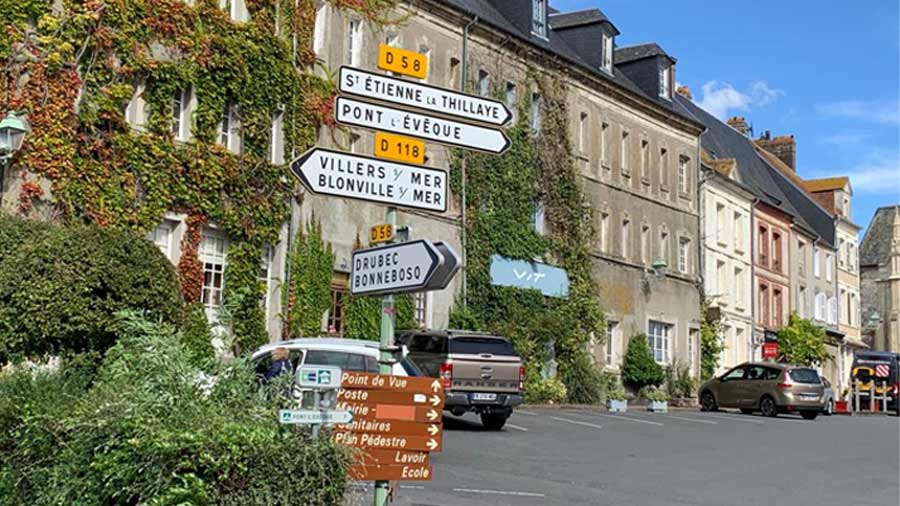
Beaumont-en-Auge
We discovered Beaumont-en-Auge, Beuvron-en-Auge and of course Pont L’Eveque. To the south, there is the stunning Mont Saint-Michel, which is a tidal island with impressive sea views, and of course there is Giverny, home of the painter Monet where he painted the water lilies.
Normandy is one of those hidden gems of France and I urge you to visit.
Karen Anand is a food and travel writer, author, food consultant and founder of Markets by Karen Anand, a curated gourmet lifestyle market that takes place across India.
